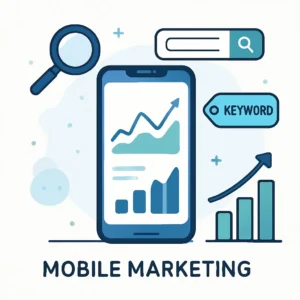

Omni-Channel in Digital Marketing
Omni-channel digital marketing has emerged as a cornerstone strategy to unify customer interactions and drive engagement across channels. This article explores key concepts, techniques, and examples of omni-channel marketing, offering actionable insights for businesses to enhance customer retention and streamline marketing efforts.
Table of Contents
ToggleWhat is Omni-Channel Digital Marketing?
Omni-channel digital marketing is a strategy that integrates and aligns a brand’s marketing efforts across all platforms to provide a consistent and seamless customer experience. Unlike multi-channel marketing, which focuses on the presence across various channels, omni-channel marketing prioritizes the customer journey by ensuring all channels work cohesively to deliver a unified experience.
Why is Omni-Channel Marketing Important?
In today’s customer-centric market, consumers demand personalized and uninterrupted interactions with brands. Businesses that implement omni-channel marketing strategies report:
- Higher customer retention: Customers are more likely to remain loyal when they receive a seamless experience.
- Increased sales: Consistent messaging across platforms drives conversions.
- Better data insights: Integration of marketing channels allows businesses to collect and analyze customer data for informed decision-making.
For example, an e-commerce store integrating email campaigns with social media ads and mobile app notifications ensures customers receive consistent reminders tailored to their preferences.
Key Components of Omni-Channel Digital Marketing
1. Omni-Channel Marketing Strategy
Developing an omni-channel strategy begins with understanding customer behavior. Use customer journey mapping to identify touchpoints, pain points, and opportunities for engagement. Align your messaging, tone, and visuals across all channels to create a cohesive brand identity.
2. Omni-Channel Marketing Integration
Integration is at the heart of omni-channel marketing. Businesses must unify data from various platforms, such as websites, mobile apps, email campaigns, and social media, into a central hub. Tools like customer relationship management (CRM) systems and marketing automation software streamline this process, ensuring consistency in communication.
3. Cross-Channel Marketing
Cross-channel marketing is a precursor to omni-channel success. It involves linking different channels to complement each other. For example, a customer might browse products on your website, receive a personalized email offer, and complete the purchase via a mobile app.
4. Content Syndication for Omni-Channel Marketing
Content syndication distributes valuable content across multiple platforms to reach diverse audiences. This approach amplifies the brand’s presence while ensuring consistency. For instance, repurposing a blog post into social media snippets, videos, and email newsletters ensures the message reaches customers in their preferred format.
5. Marketing Automation for Omni-Channel
Automation tools, like HubSpot or Salesforce, play a crucial role in executing omni-channel campaigns. These platforms can automate tasks such as personalized email marketing, SMS notifications, and retargeting ads, ensuring timely and relevant interactions with customers.
Benefits of Omni-Channel Marketing
Enhanced Customer Experience
Omni-channel marketing ensures customers experience a unified brand journey, whether they interact with your website, visit your physical store, or engage through social media.Improved Customer Retention Strategy
A seamless experience builds trust and loyalty. When customers feel valued and understood, they are more likely to return and advocate for your brand.Increased ROI
Integrated channels lead to higher engagement and conversions, directly impacting revenue. For instance, customers interacting with multiple channels have a 30% higher lifetime value than single-channel users.Actionable Data Insights
Omni-channel CRM tools aggregate data from multiple touchpoints, offering actionable insights into customer behavior, preferences, and purchasing patterns.
Examples of Omni-Channel Marketing Success
Starbucks
Starbucks leverages its mobile app to integrate rewards, payments, and order placements. Customers can reload their Starbucks Card online, via the app, or in-store, and the updates reflect instantly across all platforms.
Nike
Nike offers a seamless shopping experience by linking its website, mobile app, and physical stores. Customers can check product availability, reserve items online, and try them in-store, enhancing convenience and engagement.
Multi-Channel vs. Omni-Channel Marketing
| Aspect | Multi-Channel Marketing | Omni-Channel Marketing |
|---|
| Focus | Presence across multiple platforms | Unified customer experience |
| Channel Integration | Channels operate independently | Channels work cohesively |
| Customer Experience | May feel disjointed | Seamless and consistent |
| Data Utilization | Limited data sharing between channels | Centralized data for insights |
How to Build an Omni-Channel Marketing Strategy
Understand Your Audience
Use analytics tools to gather data on customer preferences, demographics, and behavior. Customer personas help in tailoring strategies to specific segments.Invest in Technology
Adopt CRM tools, marketing automation software, and data integration platforms to ensure smooth channel synchronization.Prioritize Personalization
Leverage customer data to offer personalized recommendations, content, and offers across channels.Test and Optimize
Use A/B testing to evaluate the effectiveness of campaigns. Continuously monitor performance metrics and adapt strategies accordingly.
Challenges in Omni-Channel Marketing
Integration Complexity
Synchronizing multiple platforms and tools can be challenging, especially for businesses with legacy systems.Data Management
Handling vast amounts of customer data requires robust analytics tools and data privacy compliance.Resource Intensive
Implementing an omni-channel strategy demands significant investment in technology, training, and manpower.
Future of Omni-Channel Marketing
As technology evolves, the lines between physical and digital interactions will blur further. Trends like AI-driven personalization, voice search integration, and augmented reality will enhance omni-channel experiences. Businesses that adopt a customer-first approach and invest in innovative tools will stay ahead in this competitive landscape.
Conclusion
Omni-channel digital marketing is no longer optional—it’s a necessity in the modern business ecosystem. By integrating channels, leveraging data, and prioritizing customer experiences, businesses can achieve higher engagement, retention, and revenue. Whether through content syndication, marketing automation, or CRM tools, the key lies in delivering consistent and personalized experiences across all touch-points. By adopting a well-planned omni-channel strategy, your brand can not only meet but exceed customer expectations, positioning itself as a leader in the digital marketplace.
Related Posts
tlovertonet
I’ve recently started a site, the information you offer on this site has helped me greatly. Thank you for all of your time & work.






















4 comments